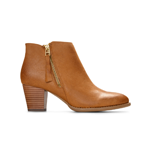
11 Stretches to Do Before Walking

Walking is a relatively easy and often underrated workout. It’s ideal for people of all fitness levels, plus it gets your heart rate up, burns calories, and can even tone your leg muscles. And perhaps best of all, you can do it virtually anywhere, anytime.
One of the main draws of walking is that you can get up and go whenever you feel like it—no equipment necessary. But there are still a few things you’ll want to do before jaunting out the door. For one, slipping into a pair of supportive sneakers or walking sandals can help you maintain a natural stride and reduce pain and discomfort. If you suspect that you might need a new pair of sneakers, we’ve written about the best shoes for home workouts in detail. Also, though it’s not a must, non-restrictive, breathable clothing can keep you comfortable too. And if it’s sunny out, you might want to throw on a hat and slather on some sunscreen.
We also recommend doing a series of stretches before walking, as well as afterward, to help you cool down. While you probably appreciate being able to head out for a stroll whenever you please, taking a moment to focus on your flexibility is more beneficial than you may think.
Read on for a breakdown of why stretching is a crucial component of any fitness routine—yep, even walking—and some of the best stretches to do before walking.
The Importance of Stretching Before and After a Walk
Part of the appeal of going on walks is that the no-nonsense workout doesn’t necessarily require you to change your clothes or break a sweat. But just because you may not be getting as much cardio as you would on a run or perspiring like you would during a HIIT (high-intensity interval training) session, you should treat your walk like any other workout. In other words, it’s important to warm up cold muscles and cool down with a few minutes of flexibility exercises.
Stretching exercises before walking and post-walk can help prevent muscle soreness, minimize stiffness, and reduce the chance of injury. Similar to running, starting a walk with tight muscles can slow you down, restrict your stride, and affect your agility.
Additionally, working on your flexibility every day can help you maintain a full range of motion, which is critical as you age.¹ A stretching routine can also extend your ligaments and lengthen your muscles after sitting still or laying in a sedentary position.
Doing a few stretches before walking might seem like an inconvenience at first, but it can actually feel really great—especially after a few weeks when you start to become more flexible. And when you return from your route, dynamic stretching again for a few minutes can help you relax and cool down while you catch your breath.
Stretches to Do Before Walking
There are tons of excellent static stretching exercises to do before walking, including many simple techniques you can do anywhere. The goal is to loosen up your body, release lactic acid, and get your blood flowing.
If you don’t have any go-to moves, we suggest starting with a quad stretch, a hip stretch, a calf stretch, a chest stretch, a shoulder stretch, leg swings, and ankle rotations. Stay in each static stretch for 20 to 30 seconds, and remember to go slowly and take deep breaths.
Quad Stretch
Start by standing up straight with your feet hip-width apart. Then bend one leg back like you’re getting ready to kick something, and reach behind you with the opposite hand to grab the lifted ankle.² Gently pull your ankle in toward your body and upward, keeping your tailbone in a neutral position.
You should feel the stretch down your quadriceps (the front of your thigh). If you’re having trouble balancing on one leg, you can use a chair, wall, tree, fence, or another surface for support. Repeat the move on the opposite side.
Hip Stretch
Start in a comfortable stance with your feet together or a few inches apart, then slowly squat down like you’re sitting back into a chair. Lift one leg out in front of you, then bring it back toward your body, setting your ankle over your opposite thigh.
Slowly sit back into the stretch, maintaining a squatting position with your supporting leg. You should feel it in your hip flexor (where the top of your thigh connects to your hip bone). Repeat the stretch on the opposite side.
Calf Stretch
Standing up straight with your feet hip-width apart, extend one leg straight back and place your foot flat on the ground. With a slightly bent front leg and straight back leg, lean forward at the waist until you feel the stretch in your calf.
Hold the move and then repeat it on the opposite side. You can do this simple stretch with your hands placed on a wall or for support, though it’s not a requirement.
Chest Stretch
You might not think you need to stretch your upper body before heading out the door, but believe it or not, a walking exercise is a full-body workout. Your legs and glutes are doing a majority of the work, and they’ll reap most of the muscle-toning benefits. However, your arms and chest are engaged as well.
To stretch your chest, start in a standing position with your legs hip-width apart. Straighten your arms directly out to the sides so they’re parallel with the ground. Then gently reach them back further, one inch at a time, until you feel a good stretch throughout your chest muscles. Hold your chest upward and allow your back to arch slightly while your upper body opens up.
Shoulder Stretch
Standing up straight with your legs hip-width apart, place one arm across the front of your torso. Gently push it inward with your opposite arm and hold. Then switch arms.
Leg Swings
For this leg stretch, start in a standing position, then lift one leg and slowly swing it outward in a semi-circular motion. Repeat on the opposite leg, and keep alternating between legs. You can do leg swings over a chair or stool or just through the air if you’re outside.
Ankle Rotations
We also suggest doing a few ankle rotations before going on a walk. In a sitting or standing position, lift one foot and hold it in a flexed position. Then rotate your lifted ankle in circular motions several times to the right and then several times to the left. Repeat on the opposite side.

Post-Walk Stretches
Your post-walk stretches can include all the same moves you do before going on a walk (and vice versa), though it’s OK to mix it up too. We recommend a kneeling hip stretch, a classic hamstring stretch, a butterfly stretch, a downward-facing dog, and a cobra stretch.
Hamstring Stretch
Hamstring stretches after walking can be done in a standing or sitting position. With your feet together or a few inches apart, bend forward at your hips and reach toward your toes.
Butterfly Stretch
Sitting on the floor with your legs bent and the soles of your feet touching, slowly lean forward.³ You can reach your hands out and press them onto the floor, clasp your ankles, or gently press down on your inner thighs.
Downward Facing Dog
Start on your hands and knees with your knees hip-width apart and your palms flat on the floor. Lift your hips up and back so that your body forms an upside-down V shape.⁴ Press your heels down toward the floor, keeping your palms flat with your arms stretched out in front of you. This move stretches your entire backside, including your calves, hamstrings, lower back, and shoulder blades.
Cobra Stretch
The cobra stretch (or cobra pose), on the other hand, stretches your front side, including your abs, shoulders, and chest. Start lying face-down on the floor with your elbows bent and your palms pressed into the floor. Then push up with your palms, lift your chest and torso up, and arch your back while looking up toward the sky.
Where to Buy the Best Walking Shoes
Daily stretching is part of the recipe for a healthy fitness routine. But a supportive pair of shoes for walking is another essential component. For built-in orthotics and an endlessly comfortable fit, look no further than the men’s and women’s styles from Vionic.
Our walking sneakers come in lace-up (check out our guide to lacing sneakers) and hook-and-loop designs and every pair has cushioned footbeds, flexible yet sturdy outsoles, breathable uppers, and a special PU foam base that reduces rubbing against your skin. Plus, moisture-wicking liners keep your feet fresh, and an antibacterial top-cloth keeps odors in check.
Browse Vionic’s walking shoes for men and women today!
External sources:
1. https://www.arthritis.org/health-wellness/healthy-living/physical-activity/walking/stretching-basics-for-walking
2. https://blog.fitbit.com/stretching-routine-for-walkers/
3. https://www.nhs.uk/live-well/exercise/how-to-stretch-after-exercising/
4. https://www.prevention.com/fitness/fitness-tips/a20460446/best-stretches-after-walking/











